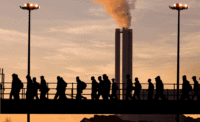In rodeo, it’s not really a matter of if you’ll get injured, but when and how badly.
Last year, a major shoulder injury that tore six of the eight tendons in his riding arm took one rider out of competition for several months.
Every rider who competes in professional rodeos carries a catalog of their injuries.
“Just in the last few years, I’ve got a totally torn UCL in my elbow, fractured my pelvis, broke some ribs, broken both arms before, broken feet — it’s a tough sport, for sure,” said one rider.
Unlike professional basketball or football players, rodeo athletes don’t have team doctors to help keep them healthy.
There’s several thousand members of the professional cowboy rodeo association, and the reality is only about 300 of them are making a living.
There are key differences in treating rodeo athletes.
They’re on the road a lot, and many live in rural places, which can make continuity of care difficult. That means teaching the athletes how to do their own physical therapy, to apply braces and athletic tape to prevent or help injuries heal, and to know when they need to go to a hospital or see a doctor.
Overall, there are far more similarities than differences when it comes to sports injuries. A muscle, is a muscle, is a muscle.
Big cuts happen, blood and guts happen. But riders, who are mostly independent contractors, who suffer fractures and don’t have medical coverage will say, “What’s wrong with my arm?’ Well, it’s broken. “What’s wrong with my foot?” Well, it definitely needs surgery.
“We’re all a bunch of ranch-raised kids for the most part. It’s not like we have a whole lot of extensive knowledge of how to stay healthy and how to stay at the top of our game,” one rider said. “So yeah, the knowledge is probably the biggest thing for me.”
Source: www.hppr.org






